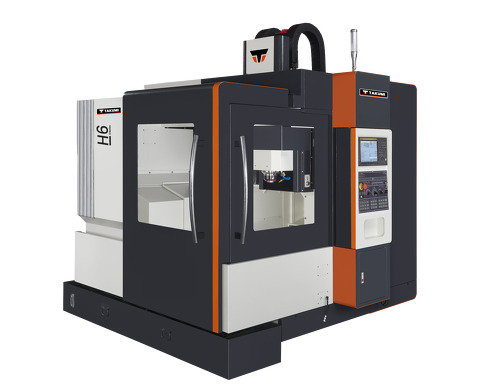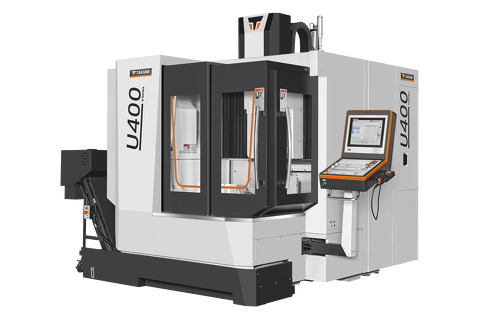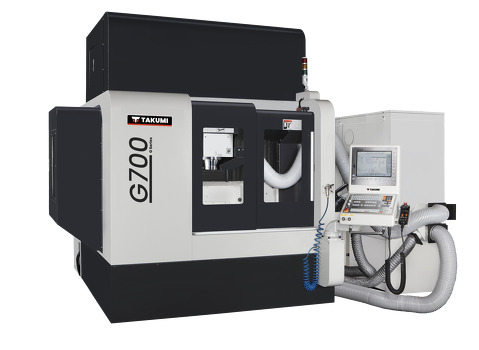- Machining center
- Control
- News & Media
- Company
- Blog
- Contact
5 Reasons High Speed CNC Machining Can Boost Your Production Efficiency by 50 Percent
In today's fast-paced manufacturing landscape, the quest for increased production efficiency is paramount for businesses striving to maintain a competitive edge. One of the most effective ways to achieve this is through high speed CNC machining. This advanced machining technology not only enhances precision but also significantly reduces production time, leading to a remarkable boost in overall output.

Utilizing high speed CNC machining techniques allows manufacturers to streamline their operations, reduce material waste, and improve final product quality. In this blog, we will explore five compelling reasons why integrating high speed CNC machining into your production processes can elevate your efficiency by up to 50 percent, ultimately contributing to sustained growth and profitability in your organization.
Benefits of High-Speed CNC Machining over Conventional Methods
 High-speed CNC machining has emerged as a game-changer in modern manufacturing, significantly enhancing production efficiency compared to conventional methods. According to a report by the American Society of Mechanical Engineers (ASME), companies that have adopted high-speed machining techniques have witnessed productivity increases of over 50%. This is primarily due to the ability of high-speed CNC machines to operate at rapid feed rates and spindle speeds, allowing for quicker material removal and reduced cycle times. For instance, high-speed machining can achieve feed rates of 600 inches per minute, which is substantially higher than the typical 100 inches per minute in traditional machining processes.
High-speed CNC machining has emerged as a game-changer in modern manufacturing, significantly enhancing production efficiency compared to conventional methods. According to a report by the American Society of Mechanical Engineers (ASME), companies that have adopted high-speed machining techniques have witnessed productivity increases of over 50%. This is primarily due to the ability of high-speed CNC machines to operate at rapid feed rates and spindle speeds, allowing for quicker material removal and reduced cycle times. For instance, high-speed machining can achieve feed rates of 600 inches per minute, which is substantially higher than the typical 100 inches per minute in traditional machining processes.
Moreover, high-speed CNC machining offers substantial improvements in precision and surface finish quality. A study published in the Journal of Manufacturing Science and Engineering revealed that using high-speed techniques can enhance surface finish quality by up to 80%, leading to reduced post-processing requirements. This not only saves time but also minimizes waste associated with rework or secondary operations. As industries continue to seek efficiencies, the pivot to high-speed CNC machining not only meets the demand for rapid production but also aligns with the goal of maintaining high-quality standards in manufactured parts.
Cost Savings Analysis: High-Speed CNC vs. Traditional Machining
In the realm of manufacturing, the transition from traditional machining to high-speed CNC machining is not just a trend, but a strategic move poised to significantly enhance production efficiency. According to a recent report by a leading market research firm, high-speed CNC machining can improve production rates by up to 50%. This remarkable increase can be attributed to the reduced cycle times and minimized setup delays inherent in high-speed operations.
Furthermore, the cost savings analysis underscores the financial benefits of switching to high-speed CNC methods. Traditional machining processes often require longer lead times and more manual labor, resulting in higher operational costs. In contrast, high-speed CNC machining not only streamlines production but also lowers labor costs by automating complex tasks, allowing for reallocation of skilled workers to more critical areas of manufacturing. Reports indicate that businesses adopting high-speed CNC technology can decrease their production costs by approximately 30% over time, making it an investment that pays dividends in efficiency and profitability.
Impact of High-Speed CNC on Material Utilization Efficiency
High-speed CNC machining is revolutionizing the manufacturing landscape, particularly in terms of material utilization efficiency. By significantly reducing cycle times, high-speed CNC machines minimize the amount of material waste produced during the machining process. Traditional machining methods often lead to excess scrap due to slower speeds and less precise cutting paths. In contrast, the enhanced precision and speed of modern CNC operation allow for tighter tolerances and more accurate cuts, ensuring that more of the raw material is converted into usable parts.
Moreover, high-speed CNC machining enables the use of advanced tooling and cutting strategies that further optimize material use. Features such as adaptive feed rates and dynamic tool paths allow manufacturers to maximize the efficiency of each machining operation. This means that complex geometries can be machined with fewer setups and reduced tool wear, resulting in lower overall production costs and improved sustainability. As a result, businesses that adopt high-speed CNC technology not only gain a competitive edge but also significantly enhance their material utilization efficiency, ultimately leading to a more responsible and profitable manufacturing process.
5 Reasons High Speed CNC Machining Can Boost Your Production Efficiency by 50 Percent
| Reason | Impact on Production Efficiency | Material Utilization Efficiency (%) | Reduction in Waste (%) | Cycle Time Reduction (%) |
|---|---|---|---|---|
| Increased Cutting Speeds | Boosts overall output | 85 | 15 | 30 |
| Advanced Tooling | Enhances precision | 90 | 10 | 25 |
| Automated Processes | Streamlines production flow | 80 | 20 | 40 |
| Reduced Machine Setup Time | Maximizes machine usage | 87 | 13 | 20 |
| Improved Surface Finish | Reduces rework time | 92 | 8 | 15 |
Time Reduction in Production Cycles: A Comparative Study
In the fast-paced manufacturing landscape, time reduction in production cycles has become crucial for staying competitive. High-speed CNC machining offers a transformative solution by significantly decreasing the time taken from design to finished product. By utilizing advanced spindle speeds and feed rates, manufacturers can complete complex tasks in a fraction of the time required by traditional machining processes. This efficiency not only facilitates shorter lead times but also allows for rapid prototyping and iterative testing, which are integral to modern manufacturing strategies.
A comparative study of production cycles reveals that facilities adopting high-speed CNC machining can achieve up to a 50% reduction in cycle times. This is largely due to the synchronized operations and automated controls that minimize human error and optimize workflow. Additionally, the enhanced precision and repeatability of high-speed CNC machines lead to fewer defects and reworks, further streamlining the production process. As manufacturers continue to navigate the challenges of demand volatility and supply chain disruptions, embracing high-speed machining technology is more essential than ever for maximizing efficiency and productivity.
Quality and Precision: High-Speed CNC Machining vs. Other Techniques
When it comes to achieving superior quality and precision in manufacturing, high-speed CNC machining stands as a game changer compared to traditional machining techniques. Unlike conventional methods that typically rely on slower feed rates and manual adjustments, high-speed CNC machining utilizes advanced technology to maintain consistency and precision at elevated speeds. This not only reduces production time but also minimizes errors, ensuring that each part produced meets stringent quality standards.

Moreover, high-speed CNC machining excels in intricate designs and complex geometries. As industries move towards more sophisticated and detailed components, the ability to execute these designs with accuracy is paramount. Traditional machining approaches often struggle with higher tolerances and intricate details, leading to increased scrap rates and rework. In contrast, high-speed CNC systems allow for the production of challenging contours and profiles with remarkable precision, significantly enhancing product quality and delivering higher satisfaction to clients who demand perfection.
As a result, adopting high-speed CNC machining can provide manufacturers with a crucial competitive edge in today's fast-paced market.



